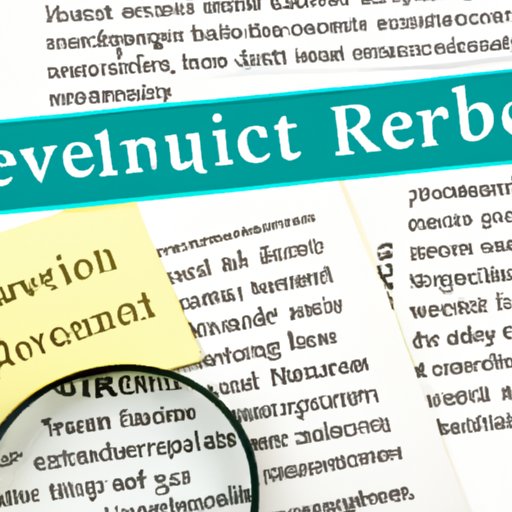Introduction
A literature review is an important part of any research project. It serves as a comprehensive summary of the existing knowledge on a particular topic or subject, and provides an analysis of the current state of the field. As such, it is essential that the methodology used to create the literature review is sound and effective. This article will provide an overview of the steps and considerations involved in writing a successful literature review.

Identifying Sources for the Literature Review
The first step in writing a literature review is to identify relevant sources. There are several ways to access databases and research tools which can provide access to scholarly articles, books, and other publications related to your topic. It is important to evaluate the quality and relevance of each source before including it in your literature review. Consider factors such as the author’s credentials, the date of publication, the publisher, and the accuracy of the information.

Organizing the Literature Review by Theme or Topic
Once you have identified the sources for your literature review, you should begin to organize them by theme or topic. This will help you to better understand the different themes and topics which may be addressed in the literature review. It is also helpful to group related sources together, as this allows you to more easily compare and contrast ideas among different authors and publications.
Synthesizing and Analyzing the Literature
Once you have organized the literature review by theme or topic, you should begin to synthesize and analyze the sources. This involves examining the relationships between the different themes and topics discussed in the literature, and exploring the findings of each source. You should also consider the implications of the literature and its potential applications to your own research.

Discussing Limitations and Gaps in the Literature
When synthesizing and analyzing the literature, it is important to consider the limitations and gaps in the existing research. Identifying weaknesses in the existing literature can help to inform your own research and suggest areas for future exploration. By considering these issues, you can ensure that your literature review is comprehensive and up-to-date.
Summarizing the Findings and Conclusions
Finally, you should summarize the findings and conclusions of the literature review. This should include drawing conclusions based on the literature reviewed, and referencing the sources which were included in the review. It is also important to note any limitations or gaps in the literature, and suggest areas for further research.
Conclusion
Writing a successful literature review requires careful consideration of the various elements involved in the process. By following the steps outlined in this article, you can ensure that your literature review is comprehensive, organized, and well-researched. Additionally, by considering the limitations and gaps in the literature, you can ensure that your review is up-to-date and relevant to your own research.
(Note: Is this article not meeting your expectations? Do you have knowledge or insights to share? Unlock new opportunities and expand your reach by joining our authors team. Click Registration to join us and share your expertise with our readers.)
